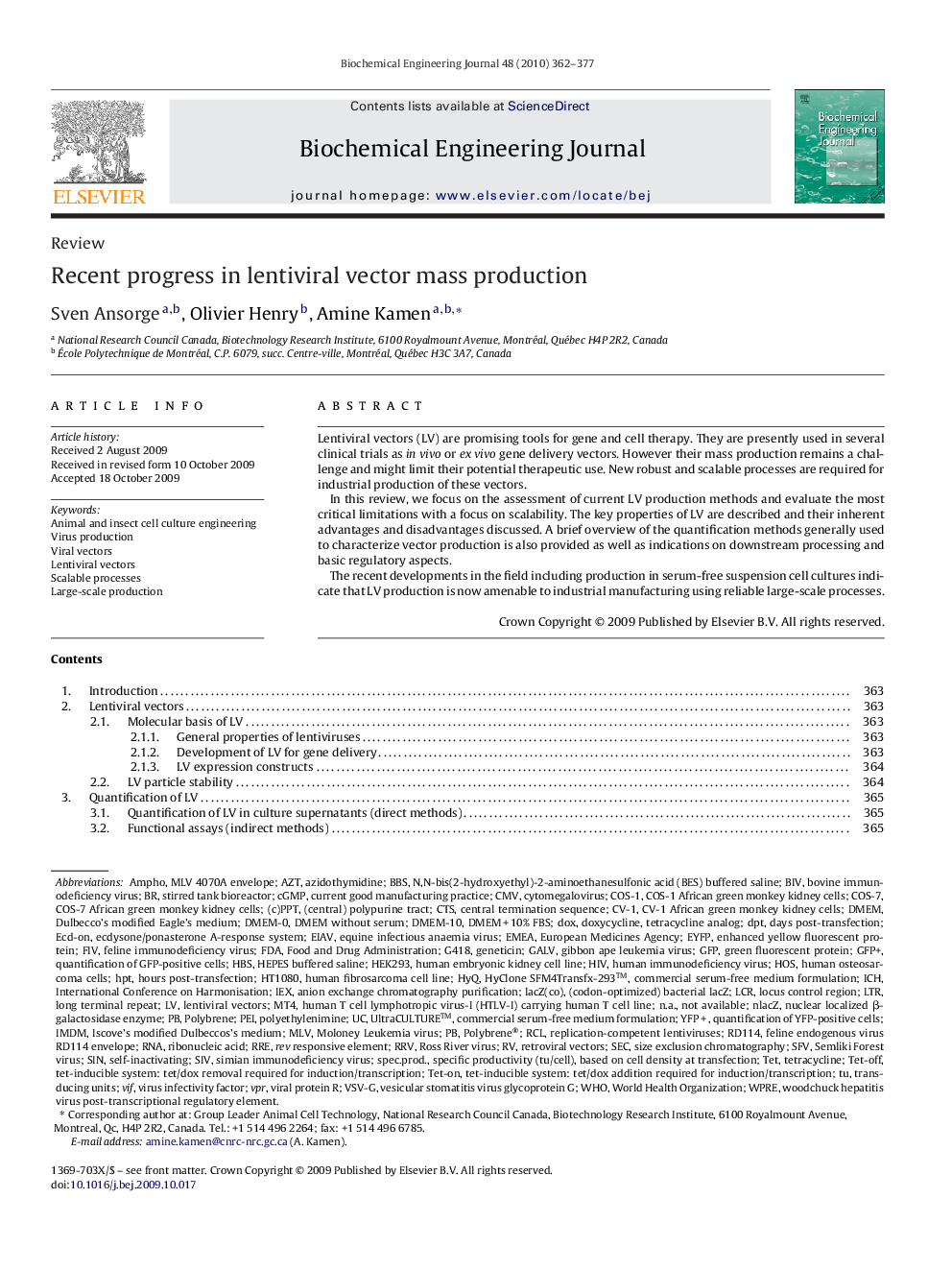| Article ID | Journal | Published Year | Pages | File Type |
|---|---|---|---|---|
| 4155 | Biochemical Engineering Journal | 2010 | 16 Pages |
Lentiviral vectors (LV) are promising tools for gene and cell therapy. They are presently used in several clinical trials as in vivo or ex vivo gene delivery vectors. However their mass production remains a challenge and might limit their potential therapeutic use. New robust and scalable processes are required for industrial production of these vectors.In this review, we focus on the assessment of current LV production methods and evaluate the most critical limitations with a focus on scalability. The key properties of LV are described and their inherent advantages and disadvantages discussed. A brief overview of the quantification methods generally used to characterize vector production is also provided as well as indications on downstream processing and basic regulatory aspects.The recent developments in the field including production in serum-free suspension cell cultures indicate that LV production is now amenable to industrial manufacturing using reliable large-scale processes.
